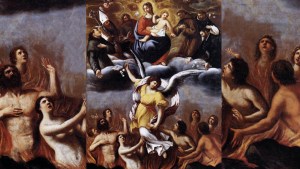“Embodied and embedded” is my new favorite phrase to describe who I am and who I am meant to be.
Considering myself “embodied and embedded” has changed my life: It has made me pray more, exercise more, eat less, and work to improve how I behave as a husband, father, and employee. “Embodied and embedded” also happens to answer major cultural issues right now — gender ideology, abortion, and loneliness. But I find that I need to learn to be “embodied and embedded” as much as anybody else.
I got the phrase from Dr. James Madden, a philosophy professor at Benedictine College in Atchison, Kansas, after hearing him discuss it on the Moral Imagination podcast.
So … what does it mean to be “embodied and embedded”?
When I teach about this in class, I use the Jason Bourne spy thriller as my example. But you could use any good hero.
The Bourne Identity is aptly titled. It opens with the barely-alive Jason Bourne regaining consciousness after an accident, realizing that he has profound amnesia and knows nothing about his personal identity. As the plot unfolds, his body gives him the first clues about who he is. His arms and legs have remarkable fighting and climbing skills. His brain has remarkable observational skills, memorizing license plates he passes and assessing the physical threat and weaknesses of those he encounters.
So his body reveals something he can’t deny: Like it or not, he is a trained and practiced killer.
But that doesn’t tell the full story. He is also “embedded” in relationships.
Bourne learns he is able to access a safety deposit box he owns. There he discovers large sums of money in various currencies, a stash of false passports bearing his picture, weapons, and colored contact lenses. He learns that he’s not just a killer, he’s a hired hitman.
But then something else happens in his life: He falls in love and starts using his body not to kill, but to protect. And suddenly, he is not defined by the evil organizations he was embedded in — he is defined by love. Eventually, in the third movie, he fully learns who he is when he discovers his family name and religion — the most fundamental, longstanding ways he is “embedded” in love.
Every hero, and every person, has to undergo this same trajectory of self-discovery, each in a different way.
Think of other heroes: In Star Wars, Luke Skywalker has to learn to master his body and embed himself with the “good guys,” an effort complicated by his own family history. In Wizard of Oz, Dorothy and her friends have to learn that their bodies lack nothing; what they need is to embed themselves in right relationships.
I, too, know who I am from my body and my relationships. My body has certain capabilities, but I discover how to use it by focusing on who I am in relation with: My employers, my wife and children, my Creator and Savior.
This is what St. John Paul II teaches in his theology of the body.
St. John Paul II taught that you do not have a body, you are a body. We are our souls, too, but our souls are embodied. “The unity of soul and body is so profound that one has to consider the soul to be the ‘form’ of the body,” says the Catechism.
How are soul and body one? There are several analogies that might help here: A lump of melted plastic in a factory is not a frisbee or a whiffle bat; it only becomes a frisbee or a whiffle bat when a form is stamped on it; a pile of paper and a vat of ink are not a book; that only happens when the ink is applied as words on the paper. They only “become what they are” when their bodies take shape and they are embedded into a world of players and readers.
We are like that, but far greater because, “Being in the image of God, the human individual possesses the dignity of a person, who is not just something, but someone. He is capable of self-knowledge, of self-possession and of freely giving himself and entering into communion with other persons,” says the Catechism.
Our body, our God, and our loved ones together show us who we are.
In short, we are embodied and embedded: Ensouled bodies made by love, and made to love
We are in the image of God — and who is God? God is himself “embedded” in relationships — God is Father, Son and Holy Spirit, which is to say God is love. And God himself became “embodied,” too, when “the Word became flesh” in Jesus Christ.
That means so much for each of us. It means that, just like Jason Bourne, Luke Skywalker and Dorothy, we find out who we are only when we give ourselves for others.
My new spiritual focus is to configure my body to Christ’s and live my life for others, especially my wife, because my body is hers, and His body is ours.


